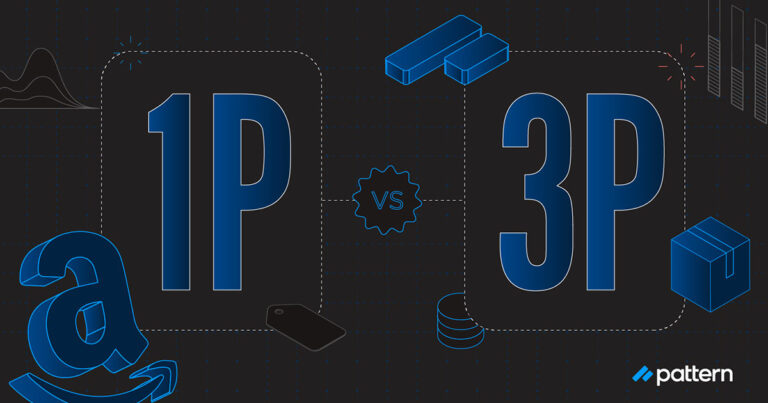With millions of third-party merchants selling products on its platform and its huge lineup of merchandise, it’s no surprise Amazon has become the biggest online retailer in the world. A recent survey conducted by Pattern shows that a whopping 85% of ecommerce executives sell products on Amazon—compare that to eBay, which came in second place with only 45% of sellers saying they use it.

It’s hard to stand out on Amazon
As online marketplaces go, Amazon seems to be the goose that lays the golden eggs, but relying on Amazon alone for sales can be detrimental to your brand.
Forty-six percent of respondents to the Pattern survey said they experience the most sales challenges on Amazon (only 18% said eBay is the most challenging platform). Some of the biggest obstacles include competing with Amazon’s private label brands, retaining customers on a platform where product—not brand—is king, and being discovered in a heavily saturated seller space.
Amazon is a hard marketplace to stand out on. By comparison, every seller on Walmart.com receives ~27,000 viewers per month whereas Amazon sellers only receive ~2,100 viewers per month. That’s 13x more!
Don’t get left behind: more and more brands are diversifying

That’s why more and more ecommerce merchants are diversifying the marketplaces they use beyond Amazon. A survey conducted by the ecommerce management platform Feedvisor shows that more than half of Amazon merchants in the United States also sell on eBay. Over one in three sell on Walmart, and close to half sell on their own platforms in addition to Amazon.
Diversification isn’t becoming more popular for nothing: it’s increasing merchants’ sales by huge margins. A report done by Stitch Lab shows that sellers who use two marketplaces in addition to a shopping cart make 120% more revenue, and retailers who sell on two marketplaces make approximately 190% higher revenue than sellers who only sell on one.
Take advantage of all your ecommerce marketshare
Even though Amazon is the biggest seller platform online, it only accounts for about 47% of the U.S. market share. Getting your product into other marketplaces, such as eBay or Walmart, can improve your brand recognition and lead to higher conversion rates, because you’re reaching different demographics of customers who might not otherwise be reached.

Walmart’s marketplace is a great secondary platform to sell on, for example, because its marketplace represents 92.5% of all products available on the Walmart website. Because there’s a bigger barrier for entry to sell on Walmart than there is for Amazon, there’s less competition in its marketplace, which is a big upside for you as a merchant.
Personalize the buying experience across ecommerce
Another benefit of diversifying the marketplaces you sell on is that it allows you more freedom to personalize the buying experience of your customer and really go the extra mile for them without the restrictions of Amazon looming over your head; and aside from the sales benefits and the reputation it makes for your brand, one of the best things diversifying your marketplaces can do is mitigate risk.
Diversification can be a game changer for your brand, but there’s a bit of a learning curve. One of the biggest obstacles is that different marketplaces have different sets of rules and requirements to manage.

In an interview with eMarketer.com, Feedonomics co-founder Brian Roizen gave the example that some marketplaces, “like Google Shopping or Google Shopping Actions, allow you to have 70 characters in your title. But others, like Amazon, allow for 200 characters.”
What this means is you have to be more selective with Google Shopping than you might be with Amazon and therefore have different sales strategies for each platform.
Managing data across multiple platforms can also be a challenge, Roizen says, because you may have to “dynamically optimize” your product data for each individual channel on a recurring basis as the market changes. You may also have different fulfillment strategies to devise per platform.
Partner with someone who’s done it successfully for years
Luckily, Pattern’s marketplace experts have strategies and years of experience to help brands optimize products on various marketplaces, as well as capabilities for managing multiple fulfillment strategies. Diversifying your marketplaces is something you should consider as a seller, as the benefits of doing so are substantial and can really help your business thrive.
Learn more about how you can diversify and leverage your marketplaces to increase sales. Contact our Pattern team.





